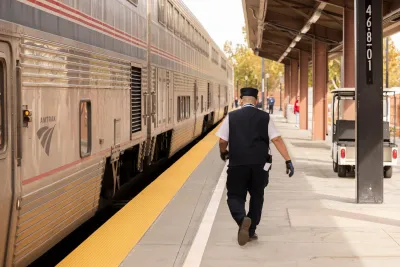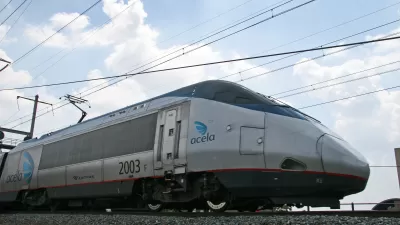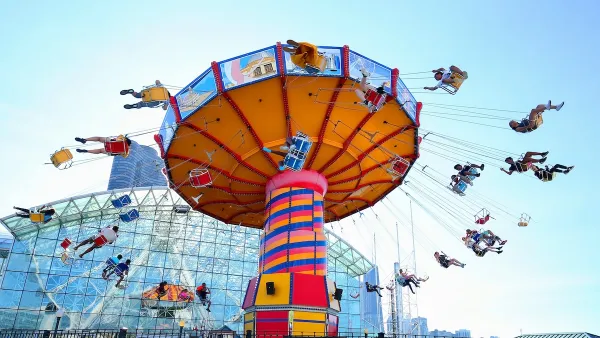An outdated rail network that privileges freight won’t be fixed by privatizing Amtrak.

In an op-ed in Streetsblog USA, Edward D’Amato argues that privatizing Amtrak won’t make U.S. passenger rail better.
According to D’Amato, “Amtrak’s government ownership isn’t the problem. The issue runs deeper.” U.S. rail lines, D’Amato explains, were largely built in the 19th century by private interests. “Back then, rail lines didn’t need to be straight and fast as trains only had to compete with canals, stagecoaches and riverboats — not cars and airplanes.”
Today, transportation needs are different, but U.S. railways have not caught up. Building out a passenger rail network requires public investment, and the success of private operator Brightline in Florida is “ an exception rather than a blueprint for national success. Its model depends on some public investment and will work only on the most densely traveled routes.”
D’Amato argues that the U.S. needs a dedicated, publicly funded passenger rail network separate from freight traffic to attract private rail investment — not entirely different from how governments fund airports and highways to enable private transportation.
According to D’Amato, the U.S. must take three steps to create an effective, modern passenger rail network:
- Create a passenger rail trust fund similar ot the Highway Trust Fund
- Establish a federal policy framework for passenger rail
- Create a federal Passenger Rail Authority
FULL STORY: Op-Ed: What Amtrak Privatization Advocates Miss

Maui's Vacation Rental Debate Turns Ugly
Verbal attacks, misinformation campaigns and fistfights plague a high-stakes debate to convert thousands of vacation rentals into long-term housing.

Planetizen Federal Action Tracker
A weekly monitor of how Trump’s orders and actions are impacting planners and planning in America.

San Francisco Suspends Traffic Calming Amidst Record Deaths
Citing “a challenging fiscal landscape,” the city will cease the program on the heels of 42 traffic deaths, including 24 pedestrians.

Adaptive Reuse Will Create Housing in a Suburban Texas Strip Mall
A developer is reimagining a strip mall property as a mixed-use complex with housing and retail.

Study: Anti-Homelessness Laws Don’t Work
Research shows that punitive measures that criminalized unhoused people don’t help reduce homelessness.

In U.S., Urban Gondolas Face Uphill Battle
Cities in Latin America and Europe have embraced aerial transitways — AKA gondolas — as sustainable, convenient urban transport, especially in tricky geographies. American cities have yet to catch up.
Urban Design for Planners 1: Software Tools
This six-course series explores essential urban design concepts using open source software and equips planners with the tools they need to participate fully in the urban design process.
Planning for Universal Design
Learn the tools for implementing Universal Design in planning regulations.
Heyer Gruel & Associates PA
JM Goldson LLC
Custer County Colorado
City of Camden Redevelopment Agency
City of Astoria
Transportation Research & Education Center (TREC) at Portland State University
Jefferson Parish Government
Camden Redevelopment Agency
City of Claremont





























